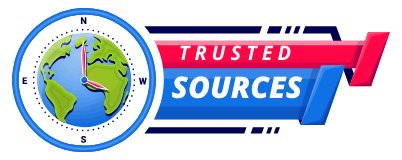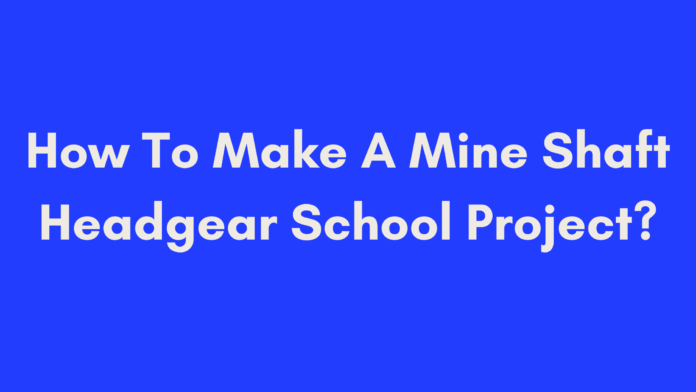Quick Summary
Creating a mine shaft headgear model for a school project is a fantastic way to explore engineering and historical mining concepts. This guide provides a step-by-step approach, from planning and gathering materials to constructing, decorating, and testing your model. You’ll learn how to design your headgear accurately, handle common challenges, and add realistic details to make your project stand out. Whether you’re aiming for a detailed replica or a simple educational model, this comprehensive guide ensures you have all the information needed for a successful and informative project.
Introduction to Mine Shaft Headgear
What is Mine Shaft Headgear?
Mine shaft headgear is an essential component in the mining industry. It’s a structure that supports the hoisting equipment used to lift and lower miners, ore, and materials into and out of the mine shaft. Essentially, the headgear is the uppermost part of the mine shaft and serves as a critical piece of equipment in mining operations.
Historically, mine shaft headgear has evolved from simple wooden structures to complex steel frameworks, reflecting advances in mining technology and engineering. The headgear’s design ensures the safe and efficient transportation of materials, which is crucial in maintaining productivity and safety in mining operations.
Key Functions:
- Support: It holds the hoisting equipment, including the headframe, pulleys, and ropes.
- Safety: It ensures the secure transport of miners and materials, reducing the risk of accidents.
- Efficiency: It enables efficient movement of materials, aiding in the extraction and transport of ore.
Importance in Mining History
The development of mine shaft headgear has been pivotal in the history of mining. Early mining operations used rudimentary structures, but as mining technology advanced, so did the design of headgear. This evolution not only improved safety but also significantly increased mining efficiency.
The introduction of steel and reinforced concrete in the construction of headgear marked a major advancement. These materials offered greater durability and strength, enabling deeper and more extensive mining operations.
Why is a Mine Shaft Headgear School Project a Great Choice?
Educational Value
Creating a model of a mine shaft headgear for a school project provides a unique opportunity to delve into several educational areas.
- Engineering and Physics: The project involves understanding the principles of engineering and physics, such as load distribution, structural integrity, and mechanical systems.
- Historical Insights: It offers a chance to explore the historical significance of mining and how engineering solutions have evolved over time.
By constructing a model, students gain hands-on experience with these concepts, making the learning process more engaging and effective.
Practical Skills Developed
Building a mine shaft headgear model helps students develop various practical skills:
- Design and Construction: Students learn to design and construct a model, which involves planning, cutting, assembling, and decorating.
- Problem-Solving: The project encourages creative problem-solving as students address challenges related to model stability and accuracy.
- Creativity: Adding decorative elements and fine details allows for personal expression and creativity.
These skills are valuable beyond the classroom, providing a foundation for future projects and problem-solving scenarios.
Materials Needed for Your Mine Shaft Headgear Project
Basic Materials
To get started with your mine shaft headgear model, you’ll need the following basic materials:
- Cardboard or Foam Core Board: These materials form the primary structure of your model. They are easy to cut and assemble, making them ideal for this project.
- Scissors: Essential for cutting the cardboard or foam core into the required shapes.
- Tape and Glue: Used for assembling the parts of your model. Choose a strong adhesive to ensure stability.
- Markers or Crayons (Optional): For adding color and details to your model.
Optional Materials
For added detail and functionality, consider these optional materials:
- String or Wire: These can be used to create a pulley system, adding realism to your model.
- Construction Paper: Use different colors to add decorative elements and make your model visually appealing.
Materials List:
| Item | Purpose |
|---|---|
| Cardboard or Foam Core | Main structure |
| Scissors | Cutting shapes |
| Tape and Glue | Assembly |
| Markers or Crayons | Decoration (optional) |
| String or Wire | Pulley system (optional) |
| Construction Paper | Additional decoration (optional) |
With these materials, you’ll be well-equipped to create a detailed and functional mine shaft headgear model for your school project.
Planning Your Mine Shaft Headgear Model
Designing Your Model
Before diving into the actual construction, it’s crucial to plan and design your mine shaft headgear model. This step ensures that your final model is accurate and functional.
- Sketch Your Design: Start by drawing a detailed sketch of your mine shaft headgear. Include all the key components, such as the headframe, pulleys, and any additional features like ropes or string.
- Use Reference Images: Look up images of real mine shaft headgear online to understand its structure and proportions. Websites like Wikipedia and Mine Safety and Health Administration offer valuable visuals and information.
- Consider Proportions and Scale: Ensure that your design is proportionate and to scale. This will help in creating a model that accurately represents a real mine shaft headgear.
Design Tips:
- Detail Matters: Pay attention to small details such as the pulley system and support beams. These details will enhance the realism of your model.
- Keep It Simple: While details are important, avoid overcomplicating your design. A well-thought-out, simpler design often leads to a more successful project.
Proportions and Scale
Getting the proportions and scale right is essential for a realistic and functional model.
- Measure and Calculate: Use measurements from your reference images to calculate the dimensions of each part of your model.
- Scale Down: If working with limited materials, scale down your design to fit the size of your cardboard or foam core board.
Proportions Checklist:
| Component | Description |
|---|---|
| Headframe | Main supporting structure |
| Pulleys | Mechanism for lifting and lowering |
| Supports | Additional beams and braces |
Constructing the Mine Shaft Headgear Model
Cutting and Assembling
With your design in hand, it’s time to cut and assemble the components of your model.
- Cutting Pieces: Carefully cut out the pieces from your cardboard or foam core board according to your design. Ensure precision to avoid gaps or uneven parts.
- Assembling the Model: Begin assembling the pieces using tape or glue. Start with the main frame and gradually add additional components.
Assembly Steps:
- Frame Construction: Assemble the main structure first, ensuring stability.
- Add Details: Attach smaller parts such as pulleys and supports.
- Secure Components: Use glue sparingly to avoid weak spots.
Adding Details
To make your model more realistic, add functional and decorative details.
- Pulley System: If using string or wire, create a functional pulley system. Attach it to the top of the headgear where the cage would be loaded.
- Painting and Decoration: Use markers or paint to add color and details. Consider painting the headgear to mimic real-life materials such as steel or wood.
Detailing Tips:
- Realistic Painting: Use metallic or wood-like paints for authenticity.
- Functional Pulley: Ensure that the string or wire is securely attached and can move smoothly.
Safety Considerations
During the construction process, keep safety in mind.
- Use Tools Carefully: Handle scissors and glue with care to avoid accidents.
- Work in a Well-Ventilated Area: If using strong adhesives or paints, ensure proper ventilation.
Testing and Finalizing Your Project
Testing Stability and Durability
Once your model is assembled, it’s important to test its stability and durability.
- Test Load-Bearing Capacity: Gently place a light object on the model to test its stability. Ensure that it can support the weight without collapsing.
- Check for Weak Spots: Inspect your model for any weak points or areas that may need reinforcement.
Testing Checklist:
| Test | Purpose |
|---|---|
| Load-Bearing Test | Ensure stability under weight |
| Structural Integrity | Check for any weak or unstable parts |
Adding Final Touches
Complete your project by adding finishing details.
- Final Decorations: Apply any additional paint or decorations to enhance the appearance of your model.
- Presentation Tips: Prepare a brief explanation of your model and its features for presentation. Highlight the key aspects of your design and construction process.
Final Touches Tips:
- Neat Finish: Ensure that all paint and decorations are neatly applied.
- Presentation: Practice explaining your model’s design and functionality to make a strong impression.
Common Challenges and Solutions
Troubleshooting Construction Issues
Building a mine shaft headgear model can come with its share of challenges. Here are some common issues and solutions to help you overcome them:
- Weak Joints: If parts of your model are falling apart or wobbling, this might be due to weak joints.
- Solution: Use a stronger adhesive and ensure that all joints are properly secured. Reinforce weak areas with additional layers of cardboard or foam core.
- Uneven Parts: Uneven or misaligned parts can affect the stability and appearance of your model.
- Solution: Measure and cut pieces accurately. Use a ruler and pencil to mark cuts before using scissors to ensure precision.
- Difficulty in Assembly: Assembling the model can be tricky, especially if parts do not fit together well.
- Solution: Dry-fit pieces before gluing to ensure they fit correctly. Make adjustments as needed before final assembly.
Enhancing Your Project
If you want to take your project to the next level, consider these enhancements:
- Advanced Features: Add functional elements like working pulleys or moving parts to make your model more interactive.
- Example: Create a miniature winch system using a small motor or manual crank to simulate the real hoisting mechanism.
- Detailed Decorations: Go beyond basic painting by adding realistic textures and materials.
- Example: Use textured paint or fabric to mimic the look of metal or wood.
Enhancement Ideas:
| Feature | Description |
|---|---|
| Functional Pulleys | Add working pulleys for realism |
| Textured Painting | Use textured paint for a more realistic look |
Conclusion
In summary, creating a mine shaft headgear model is an engaging and educational school project that combines engineering, history, and creativity. By carefully planning your design, using the right materials, and following the construction steps, you can build a detailed and accurate model.
Recap of Key Points
- Planning: Start with a well-thought-out design and accurate proportions.
- Construction: Assemble your model with precision, paying attention to details and stability.
- Testing: Ensure your model is stable and functional before finalizing it.
Encouragement and Final Thoughts:
Remember, the process of building your mine shaft headgear model is just as valuable as the final product. It’s an opportunity to learn about engineering principles, problem-solving, and historical mining practices. Don’t be afraid to experiment and make improvements to your design.
Invitation for Feedback:
Feel free to share your completed project or any questions you may have. Your feedback and experiences can help others who are undertaking similar projects.
Frequently Asked Questions
What is the purpose of a mine shaft headgear model in a school project?
A mine shaft headgear model serves as an educational tool to help students understand the engineering principles and historical significance of mining structures. It demonstrates how headgear supports hoisting equipment used in mining operations, providing hands-on experience with concepts like load distribution, structural integrity, and mechanical systems.
What materials are best for building a mine shaft headgear model?
The best materials for building a mine shaft headgear model include:
- Cardboard or Foam Core Board: Ideal for constructing the main structure due to its ease of cutting and assembling.
- Scissors: Necessary for precise cutting of materials.
- Tape and Glue: Used for securing pieces together.
- Markers or Paint: For adding color and details.
- String or Wire (Optional): Useful for creating a functional pulley system.
- Construction Paper (Optional): For additional decoration.
These materials are commonly available and suitable for creating a detailed and functional model.
How can I ensure the accuracy of my mine shaft headgear model?
To ensure accuracy:
- Research and Reference: Use real-life images and technical diagrams of mine shaft headgear as references. Websites like Wikipedia and Mine Safety and Health Administration can be helpful.
- Detailed Design: Create a detailed sketch of your model before starting. Include all components and measurements.
- Scale Proportionately: Adjust your design to scale, ensuring that all parts are proportionate and align correctly.
What are some common challenges when building a mine shaft headgear model, and how can they be overcome?
Common challenges include:
- Weak Joints: Reinforce weak joints with additional layers of cardboard or use stronger adhesives.
- Uneven Parts: Ensure accurate cutting and alignment by measuring carefully and marking cuts.
- Assembly Issues: Dry-fit pieces before gluing to ensure proper alignment and make necessary adjustments.
Overcoming these challenges involves careful planning, precise cutting, and effective use of adhesives.
How do I add realistic details to my model?
To add realistic details:
- Paint and Texture: Use metallic or wood-like paints to mimic real materials. Apply textured paint or fabric for added realism.
- Functional Elements: Incorporate working parts such as pulleys using string or wire to simulate the hoisting mechanism.
- Decorative Features: Add small details like labels or miniatures to enhance the appearance of your model.
Conclusion
Addressing these frequently asked questions helps to clarify common concerns and provide practical solutions for building an effective mine shaft headgear model. Whether it’s about materials, accuracy, or adding details, these tips and solutions will guide you through the process.
Author’s Note
Creating a mine shaft headgear model is more than just a school project—it’s a journey into the world of engineering and mining history. This guide aims to provide a comprehensive, step-by-step approach to help you build a detailed and functional model that reflects both technical accuracy and historical significance.
As someone who has spent time exploring the intricacies of engineering models and historical mining practices, I’ve seen how hands-on projects like these can spark curiosity and deepen understanding. My goal with this article is to share practical advice, personal experiences, and valuable resources to make your project as engaging and educational as possible.
Remember, the process of creating your model offers a unique opportunity to explore concepts of physics, engineering, and history in a tangible way. Don’t hesitate to experiment, adapt, and inject your own creativity into the project. The skills and knowledge you gain will extend far beyond this assignment, fostering a greater appreciation for engineering principles and historical innovations.
If you have any questions, need further assistance, or just want to share your progress, feel free to reach out. Your feedback and experiences are invaluable, and I’m here to support you throughout your project journey.
Happy building, and enjoy the process of bringing your mine shaft headgear model to life!

Oliver is a full-time writer with a passion for creating compelling content on diverse topics, including finance, business, product reviews, and more. With a keen eye for detail and a commitment to thorough research, she brings clarity and depth to complex subjects, making them accessible and engaging for readers. Oliver’s dedication to her craft ensures that every article is informative, well-researched, and thought-provoking. Outside of writing, she enjoys exploring new ideas, reading extensively, and continually expanding her knowledge.
Editorial Process
At Trusted Sources, our editorial process is crafted to ensure that every piece of content we produce—whether it’s an informational article or a review—meets the highest standards of accuracy, reliability, and engagement. Our commitment to delivering valuable, research-driven, and reader-centric content is reflected in our systematic and meticulous editorial approach.
Affiliate Disclosure
we are committed to transparency and honesty in all aspects of our operations, including our affiliate partnerships. We participate in various affiliate programs, which means we may earn commissions on qualifying purchases made through links on our Website.


